What if you could unlock the full potential of your child’s mindset and set them on a transformative journey to growth? “The Journey to Growth to Empower Your Child’s Mindset” is a powerful resource designed to do just that.
With practical strategies, insightful guidance, and inspiring stories, this book equips parents and caregivers with the tools to nurture a growth mindset in their children. Empower your child to embrace challenges, develop resilience, and achieve their dreams with this empowering guide.
Table of contents
Introduction
Empowering a child’s mindset is crucial for their growth and development. A mindset refers to the attitudes, beliefs, and perspectives that shape how individuals perceive and approach challenges and opportunities. By fostering a positive and growth-oriented mindset in children, we can help them develop essential skills such as resilience, perseverance, adaptability, and a love for learning.
The importance of mindset lies in its profound impact on a child’s overall development. A growth mindset, characterized by the belief that abilities and intelligence can be developed through effort and learning, encourages children to embrace challenges, view failures as learning opportunities, and persist in the face of setbacks. This mindset fosters a sense of resilience, self-confidence, and a willingness to take risks.
On the other hand, a fixed mindset, where individuals believe that their abilities are fixed and cannot be improved, can hinder a child’s growth and limit their potential. Such a mindset may lead to a fear of failure, a lack of motivation to learn, and a reluctance to step out of their comfort zone.
Empowering a child’s mindset involves providing them with the necessary tools and support to develop a growth mindset. This includes nurturing their self-esteem, teaching them about the power of effort and perseverance, encouraging a love for learning, and fostering a positive and supportive environment. By instilling a growth mindset in children, we empower them to overcome challenges, embrace learning opportunities, and unlock their full potential.
In summary, mindset plays a vital role in shaping a child’s growth and development. By cultivating a growth mindset in children and empowering them with the right mindset tools, we can equip them with the mindset necessary to thrive in an ever-changing world and achieve their goals.
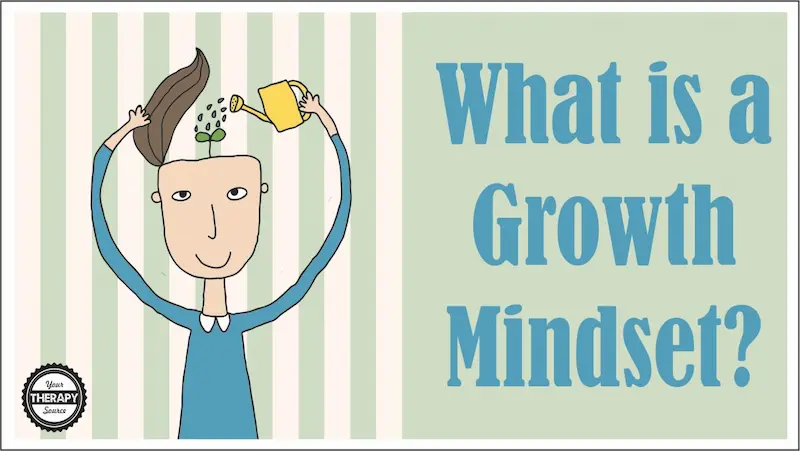
Understanding Mindset
Mindset refers to the collection of beliefs and attitudes that shape an individual’s perception, thinking patterns, and behavior. In the context of children, mindset plays a significant role in shaping their beliefs about their abilities, intelligence, and potential for growth. It influences how they approach challenges, handle setbacks, and view their own potential.
There are two main types of mindsets: fixed mindset and growth mindset.
A fixed mindset is characterized by the belief that abilities and intelligence are fixed traits that cannot be significantly developed or changed. Children with a fixed mindset tend to avoid challenges, fear failure and may give up easily when faced with difficulties. They believe that their abilities are predetermined and do not see the value in putting in effort or seeking improvement.
On the other hand, a growth mindset is a belief that abilities, intelligence, and talents can be cultivated and developed through effort, practice, and learning. Children with a growth mindset embrace challenges, see failures as opportunities for growth, and exhibit resilience in the face of setbacks. They understand that intelligence and skills can be enhanced over time, and they actively seek out opportunities to learn and improve.
To illustrate these concepts, let’s consider some examples:
1. Academic Challenges: Imagine a child who receives a low grade on a math test. A child with a fixed mindset may conclude that they are not good at math and give up, believing they cannot improve. In contrast, a child with a growth mindset would view a low grade as a starting point for growth. They would recognize that with effort, additional practice, and seeking help, they can improve their math skills over time.
2. Sports and Athletics: In a sports scenario, a child with a fixed mindset might shy away from trying out for a team because they believe they lack natural talent. They might think, “I’m just not athletic.” On the other hand, a child with a growth mindset would see the tryouts as an opportunity to develop their skills. They would approach it with the mindset of, “I may not be the best right now, but with practice and dedication, I can improve and become a better player.” Embark on an Unforgettable Journey: Join Summer Camp 2023 for Endless Adventures, Learning, and Fun .
3. Facing New Challenges: Consider a situation where a child is presented with a complex puzzle. A child with a fixed mindset might become frustrated and declare, “I can’t do this, it’s too hard.” In contrast, a child with a growth mindset would embrace the challenge, recognizing that even if they struggle initially, they can learn and develop problem-solving skills through persistence and effort.
These examples highlight how a child’s mindset can significantly impact their beliefs, behaviors, and ultimately their overall development. By nurturing a growth mindset in children, parents can encourage them to embrace challenges, believe in their potential for growth, and foster a lifelong love for learning. learn about lego robotics for kids also.
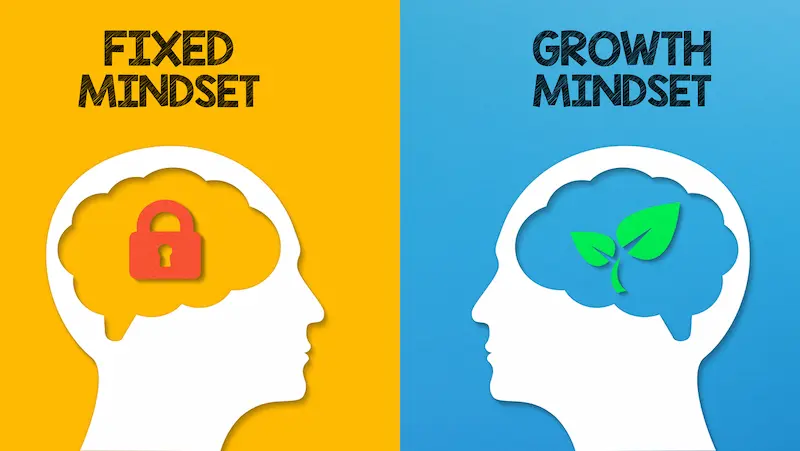
Nurturing a Growth Mindset
Fostering a growth mindset in children is essential for their personal and academic development. Here are some strategies and tips to help parents nurture a growth mindset in their children:
1. Encourage Perseverance and Embrace Challenges: Teach children that challenges and setbacks are opportunities for growth. Encourage them to take on challenges that push their boundaries and remind them that effort and persistence are key to overcoming obstacles. Celebrate their efforts and progress rather than solely focusing on outcomes or grades.
2. Teach the Power of “Yet”: Embrace the idea of not yet achieving goals. When children face difficulties or setbacks, remind them that they haven’t mastered a particular skill or concept “yet.” This helps them develop resilience and a belief in their ability to improve with time and effort.
3. Cultivate a Love for Learning and Curiosity: Foster an environment that values learning and curiosity. Encourage children to explore new topics, ask questions, and seek out knowledge. Support their interests and provide resources that fuel their curiosity, such as books, educational games, or visits to museums.
4. Provide Constructive Feedback: Offer specific and constructive feedback that focuses on effort, progress, and strategies used rather than solely on the end result. Help children understand that mistakes and failures are part of the learning process and provide an opportunity for growth and improvement.
5. Role Model a Growth Mindset: Children often learn by observing their parents or caregivers. Display a growth mindset by embracing challenges, sharing your own learning experiences, and demonstrating perseverance and resilience. Show them that learning is a lifelong journey and that you believe in their ability to grow and develop.
6. Use Positive Language: Pay attention to the language you use when talking to children. Encourage positive self-talk and avoid labeling or categorizing their abilities. Instead of saying “You’re so smart,” focus on praising their efforts, strategies, and specific improvements.
7. Celebrate Progress and Effort: Recognize and celebrate your child’s progress and efforts along their learning journey. Highlight their achievements, big or small, and emphasize the importance of growth and personal development rather than comparing them to others.
8. Create a Safe Environment for Mistakes: Encourage a safe and non-judgmental space where mistakes are seen as learning opportunities. Help children understand that mistakes are normal and that they can learn and grow from them. Encourage them to reflect on what they’ve learned and how they can improve.
By implementing these strategies, parents can play a significant role in fostering a growth mindset in their children. Through perseverance, embracing challenges, and cultivating a love for learning, children can develop a mindset that empowers them to embrace opportunities, overcome obstacles, and reach their full potential.
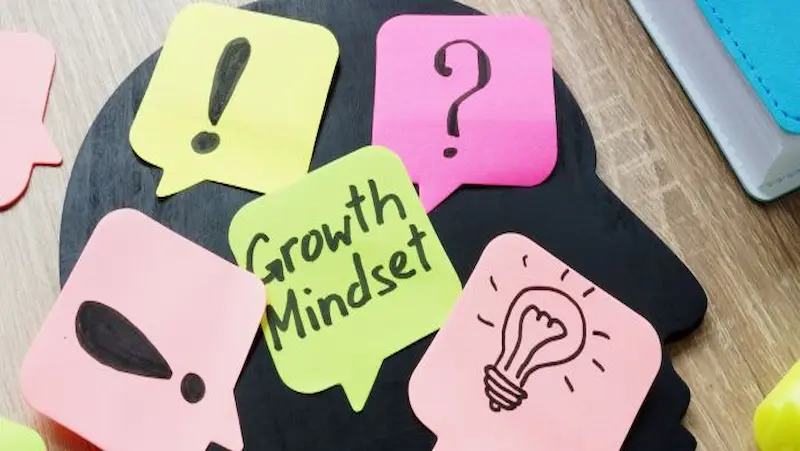
Building Resilience
Mindset and resilience are closely interconnected. A growth mindset can significantly contribute to the development of resilience in children. Resilience is the ability to bounce back from setbacks, failures, and adversity, and it involves maintaining a positive attitude, adapting to challenges, and persevering in the face of difficulties.
Here are some techniques for helping children build resilience and bounce back from setbacks and failures:
1. Teach the Power of Yet: Help children reframe setbacks as temporary and not indicative of permanent failure. Encourage them to adopt a growth mindset by emphasizing that they haven’t achieved their goals “yet” and that setbacks are opportunities for learning and growth.
2. Encourage Positive Self-Talk: Teach children to use positive self-talk to reframe negative experiences. Help them replace self-defeating thoughts with more empowering and optimistic ones. For example, instead of saying, “I’m not good at this,” they can say, “I haven’t mastered it yet, but I can learn and improve with effort.”
3. Provide Perspective: Help children gain perspective by reminding them of past challenges they have overcome successfully. Encourage them to reflect on their strengths, past accomplishments, and the strategies they used to overcome difficulties. This helps them build confidence in their ability to navigate future challenges.
4. Foster Problem-Solving Skills: Support children in developing problem-solving skills to effectively address setbacks. Encourage them to break down problems into manageable steps and brainstorm possible solutions. By focusing on solutions rather than dwelling on failures, they develop a proactive and resilient approach.
5. Promote Emotional Regulation: Teach children healthy coping strategies to manage their emotions when faced with setbacks. Encourage deep breathing, mindfulness exercises, or engaging in activities they enjoy to help them regulate their emotions and maintain a calm and positive mindset.
6. Emphasize the Learning Process: Shift the focus from the end result to the learning process itself. Help children recognize that setbacks and failures are valuable opportunities for learning, growth, and acquiring new skills. Encourage them to reflect on what they have learned from their experiences.
7. Model Healthy Responses to Criticism and Feedback: Demonstrate a healthy attitude towards criticism and constructive feedback. Teach children to listen attentively, consider feedback as an opportunity for improvement, and respond constructively. Show them that feedback is valuable and not a reflection of their worth as individuals.
8. Cultivate a Supportive Environment: Create an environment where children feel safe to share their struggles and failures without fear of judgment or criticism. Offer encouragement, support, and reassurance. Help them identify and access appropriate resources or mentors who can provide guidance and assistance.
By combining these techniques, parents can help children develop resilience and navigate setbacks and failures with a growth mindset. Encouraging positive self-talk, reframing negative experiences, promoting healthy responses to criticism, and fostering problem-solving skills empower children to bounce back stronger, adapt to challenges, and continue their journey of growth and development.

Developing Self-Confidence
Empowering children to believe in themselves and their abilities is crucial for their overall well-being and success. Here are some strategies to help build self-esteem, promote a positive self-image, and encourage a growth mindset:
1. Encourage Self-Discovery: Help children explore their interests, passions, and talents. Support their exploration of different activities and provide opportunities for them to discover their strengths. By engaging in activities they enjoy and excel at, children gain confidence and a sense of competence.
2. Focus on Effort and Progress: Emphasize the value of effort and progress over comparing themselves to others or solely focusing on outcomes. Acknowledge and celebrate their efforts, improvements, and personal growth, highlighting that their abilities can be developed with practice and perseverance. Empower Your Child’s Inner Voice Embrace the Magic of Positive Affirmations for Kids Cultivating Self-Love and Resilience.
3. Promote Self-Acceptance: Teach children to embrace their uniqueness and accept themselves as they are. Encourage them to appreciate their individual qualities and talents, fostering a positive self-image. Help them understand that everyone has strengths and weaknesses and that it’s okay to have areas for growth.
4. Set Realistic Goals: Guide children in setting realistic and achievable goals. Break larger goals into smaller, manageable steps, and celebrate their accomplishments along the way. By experiencing success in reaching their goals, children build confidence and belief in their abilities.
5. Challenge Negative Self-Talk: Teach children to recognize and challenge negative self-talk. Encourage them to reframe self-doubt or self-criticism into positive and empowering statements. For example, if they say, “I can’t do it,” help them reframe it as, “I can learn and improve with practice.”
6. Encourage Supportive Relationships: Foster supportive relationships in which children feel valued, respected, and encouraged. Surround them with positive influences, such as family members, teachers, or mentors, who believe in their potential and provide constructive feedback and support.
7. Encourage Risk-Taking: Encourage children to step out of their comfort zones and take calculated risks. Help them understand that failure is a natural part of the learning process and an opportunity for growth. By embracing challenges, children develop resilience and belief in their ability to overcome obstacles.
8. Model a Growth Mindset: Be a role model by demonstrating a growth mindset in areas where you may have self-doubt or perceive weaknesses. Show children how you approach challenges, seek improvement, and learn from setbacks. Your example can inspire them to adopt a similar mindset in their own lives.
By implementing these strategies, parents can empower children to believe in themselves, develop a positive self-image, and cultivate a growth mindset. Building self-esteem, promoting self-acceptance, and encouraging a belief in their abilities across all areas of life contributes to their overall confidence, motivation, and success.

Overcoming Challenges
Developing a growth mindset can be challenging for children, but there are strategies to address common obstacles they may encounter:
1. Tackling Fear of Failure and Perfectionism:
– Normalize failure: Teach children that failure is a natural part of learning and growth. Encourage them to see failures as opportunities for improvement rather than as reflections of their worth.
– Set realistic expectations: Help children understand that perfection is unattainable and that making mistakes is normal. Emphasize the importance of effort and progress rather than striving for flawless outcomes.
– Encourage risk-taking: Create an environment where children feel safe to take risks and try new things. Celebrate their efforts and resilience, regardless of the outcome.
2. Teaching Problem-Solving Skills and Embracing Mistakes:
– Break problems down: Teach children how to break down complex tasks or problems into smaller, manageable steps. This approach helps them feel more confident and less overwhelmed.
– Encourage critical thinking: Prompt children to think creatively and explore multiple solutions to problems. Encourage them to evaluate different approaches and learn from their mistakes along the way.Unlock the Power of Critical Thinking Skills for Kids Read This to Ignite Their Ability to Analyze, Solve, and Excel
– Emphasize the learning process: Shift the focus from solely achieving a correct answer to the process of learning and problem-solving. Highlight the value of effort, perseverance, and the lessons learned through trial and error.
3. Instilling a Sense of Grit and Determination:
– Set challenging goals: Encourage children to set goals that push their boundaries and require sustained effort. Teach them the importance of persistence and not giving up, even when faced with setbacks.
– Provide meaningful feedback: Offer specific and constructive feedback that focuses on effort, progress, and strategies used. Highlight their strengths and areas for growth, fostering a sense of self-awareness and a drive for improvement.
– Foster resilience: Help children develop resilience by supporting them through challenging situations. Teach them coping strategies, such as deep breathing or positive self-talk, to bounce back from setbacks and maintain a positive mindset.
It’s important to remember that developing a growth mindset is a process that takes time and consistency. Be patient, provide support, and model a growth mindset yourself. By addressing the fear of failure, teaching problem-solving skills, and instilling grit and determination, you can help children overcome obstacles and develop a resilient mindset that will serve them well throughout their lives.

Fostering a Supportive Environment
Parents and caregivers play a crucial role in creating an empowering environment that supports the development of a growth mindset in children. Here are some strategies to consider:
1. Effective Communication Strategies:
– Use positive and encouraging language: Provide constructive feedback that focuses on effort, progress, and specific strategies used. Use words that inspire resilience, curiosity and a belief in the child’s abilities.
– Use open-ended questions: Encourage children to reflect on their experiences, challenges, and learning processes. This helps them develop a deeper understanding of their own mindset and fosters self-awareness.
– Active listening: Pay attention to children’s thoughts, feelings, and concerns. Validate their emotions and provide support when they encounter setbacks or difficulties. This helps build trust and strengthens the parent-child relationship.
2. Modeling a Growth Mindset:
– Demonstrate a growth mindset in your own behavior: Share stories of your own challenges, setbacks, and how you overcame them. Model perseverance, resilience, and a positive attitude toward learning and growth.
– Embrace mistakes and setbacks: Show children that making mistakes is a natural part of the learning process. Discuss how you learn from your own mistakes and use them as opportunities for growth. This helps children see setbacks as learning experiences rather than failures.
3. Collaboration with Teachers and Educators:
– Communicate mindset principles with teachers: Share your beliefs and values about fostering a growth mindset with your child’s teachers. Collaborate with them to create a consistent approach at home and in the classroom.
– Support classroom initiatives: Reinforce mindset principles taught in school by incorporating them into daily conversations and activities at home. Discuss classroom assignments or projects, emphasizing effort, progress, and learning rather than solely focusing on grades or outcomes.
4. Provide Resources and Opportunities:
– Offer books and resources: Provide books, articles, or videos that promote a growth mindset. These resources can reinforce the concepts and serve as conversation starters with your child.
– Encourage extracurricular activities: Support your child’s participation in activities that promote a growth mindset, such as sports, arts, or clubs. These activities provide opportunities for learning, perseverance, and personal development.
Creating an empowering environment requires consistency, patience, and ongoing support. By using effective communication strategies, modeling a growth mindset, and collaborating with teachers and educators, parents and caregivers can create an environment that nurtures and reinforces a growth mindset in children, ultimately empowering them to reach their full potential.
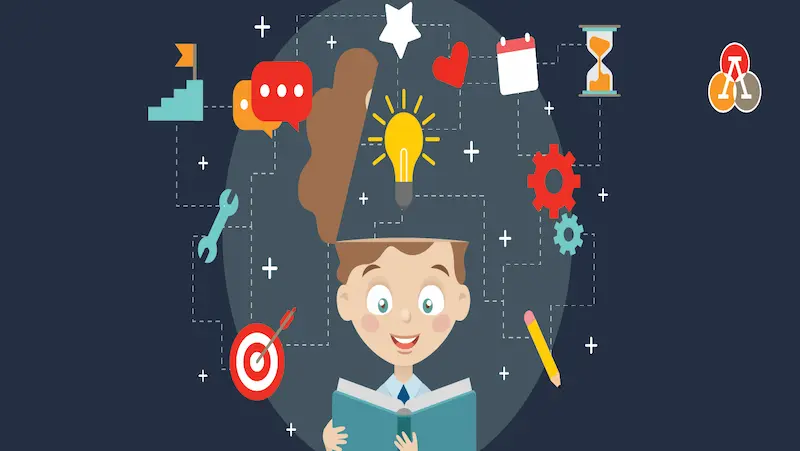
Cultivating a Lifelong Mindset
Emphasizing the importance of mindset throughout a child’s life is vital for their continued growth and success. Here are some points to consider:
1. Sustaining a Growth Mindset during Adolescence and Beyond:
– Address challenges unique to adolescence: Adolescence brings new social, academic, and personal challenges. Encourage teenagers to maintain a growth mindset by emphasizing the value of effort, perseverance, and resilience during this transitional period.
– Promote self-reflection and self-awareness: Help teenagers reflect on their mindset and how it influences their beliefs, behaviors, and goals. Encourage them to assess their strengths, weaknesses, and areas for growth, fostering a sense of personal responsibility and agency.
2. Resources and Tools for Further Exploration and Continued Growth:
– Books and articles: There are numerous books and articles available on the topic of mindset and personal development. Recommend resources such as Carol Dweck’s “Mindset: The New Psychology of Success” or other related materials that can provide deeper insights and practical strategies.
Discover captivating books for kids that will blow your mind and ignite their imagination – these reads are bound to become cherished favorites.
– Online courses and workshops: Explore online courses, workshops, or webinars focused on mindset development. These platforms offer interactive learning experiences and practical exercises to reinforce a growth mindset.
– Mobile applications: Several mobile applications offer mindset-related activities, journaling prompts, and guided exercises for ongoing growth. These apps can serve as helpful reminders and tools for individuals of all ages.
3. Encouraging Ongoing Conversations and Reflection on Mindset:
– Family discussions: Create a safe and open environment for discussing mindset-related topics. Regularly engage in conversations about growth, learning, and the power of mindset. Encourage family members to share their experiences, challenges, and insights related to personal development.
– Reflective activities: Engage in reflective activities such as journaling, goal-setting exercises, or vision boards. These activities can help individuals examine their mindset, track their progress, and set new goals aligned with a growth mindset.
– Mentorship and guidance: Encourage children and teenagers to seek mentorship or guidance from individuals who exemplify a growth mindset. Mentors can provide support, guidance, and real-life examples of how mindset influences personal and professional success.
By emphasizing the importance of mindset throughout a child’s life, sustaining a growth mindset during adolescence and beyond, providing resources and tools for further exploration, and encouraging ongoing conversations and reflection, parents and caregivers can foster lifelong learning, resilience, and personal development in their children.
Mindset is a powerful foundation that can positively impact all aspects of a person’s life, enabling them to navigate challenges, pursue their goals, and continually grow.
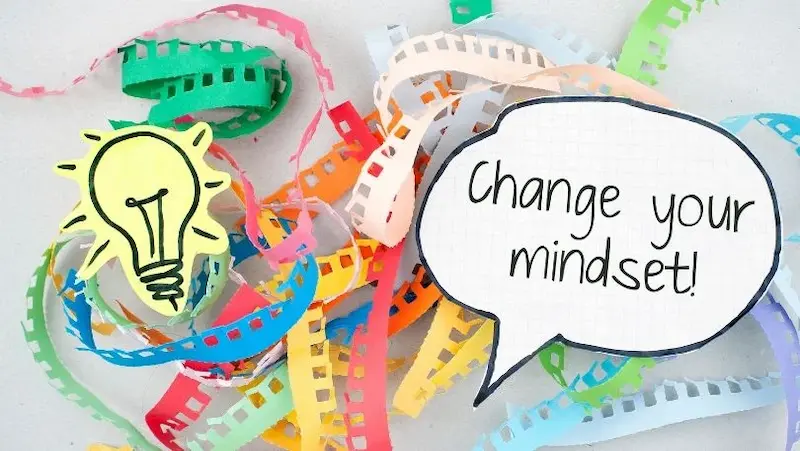
Conclusion
In conclusion, nurturing a growth mindset in children is a transformative journey that empowers them to believe in their abilities, embrace challenges, and persevere in the face of setbacks. Parents and caregivers play a vital role in creating an empowering environment that fosters a growth mindset.
By effectively communicating, modeling a growth mindset themselves, collaborating with educators, and providing ongoing resources and tools, parents can support their child’s mindset development throughout different stages of life. The importance of mindset extends beyond childhood, sustaining its impact during adolescence and beyond.
By encouraging ongoing conversations and reflection on mindset, we ensure that children continue to grow, learn, and thrive throughout their lives. Embracing a growth mindset unlocks limitless potential, resilience, and a lifelong passion for learning and personal development.
Also, BrightChamps provides a comprehensive platform for learning about money for kids, offering interactive and engaging resources that teach financial literacy, budgeting, saving, and other essential money management skills.
Frequently Asked Questions
Mindset is crucial in a child’s growth and development as it influences their beliefs, attitudes, and behaviors, shaping their ability to learn, overcome challenges, and reach their full potential.
Parents can empower their child’s mindset by encouraging perseverance, embracing challenges, fostering a love for learning, providing support and constructive feedback, and modeling a growth mindset themselves.
Common mindset challenges for children include fear of failure, perfectionism, and difficulty bouncing back from setbacks. These challenges can be overcome by teaching resilience, promoting a positive mindset, and emphasizing the value of effort and growth.
Parents can help their children develop a growth mindset by providing opportunities for learning and growth, encouraging perseverance, teaching the power of yet, and fostering a positive attitude towards challenges and mistakes.
Fostering a growth mindset in children promotes resilience, motivation, and a love for learning. It enhances their ability to overcome obstacles, embrace challenges, and reach their full potential in various areas of life.
Parents can create a supportive environment for their child’s mindset development by providing encouragement, modeling a growth mindset, offering constructive feedback, fostering a sense of curiosity, and celebrating effort and progress.
Resilience is essential in a child’s mindset and growth as it helps them bounce back from setbacks, embrace challenges, and maintain a positive attitude, ultimately fostering their overall development and success.
Parents can encourage a positive attitude and optimism in their children by modeling positive behavior, reframing negative experiences, emphasizing gratitude, and providing support and encouragement during difficult times.
Some strategies to cultivate a growth mindset in children include encouraging effort and perseverance, teaching them about the brain’s ability to grow, providing opportunities for learning and skill development, and promoting a positive self-image.
Parents can help children overcome self-doubt and develop a strong belief in their abilities by providing support and encouragement, highlighting their strengths, setting achievable goals, and celebrating their accomplishments and progress.


 We are an army of educators and passionate learners from BrightChamps family, committed to providing free learning resources to kids, parents & students.
We are an army of educators and passionate learners from BrightChamps family, committed to providing free learning resources to kids, parents & students.













